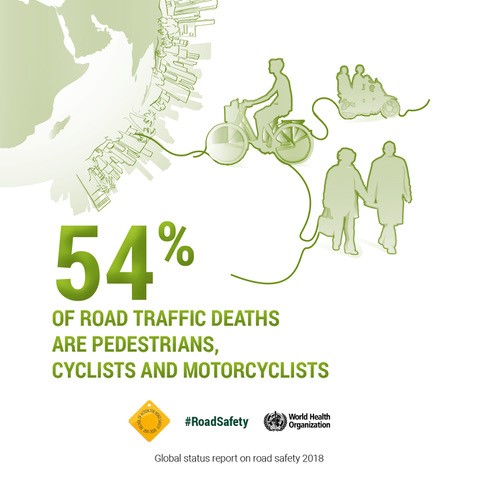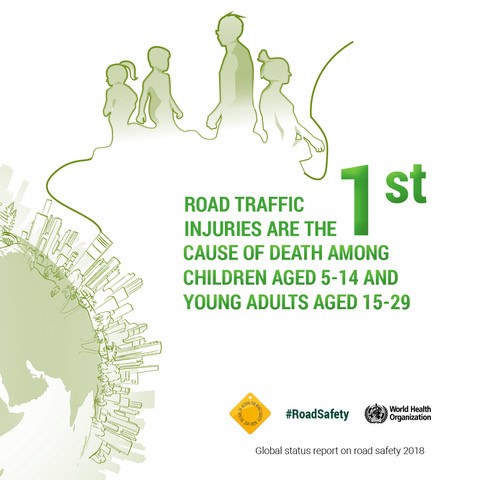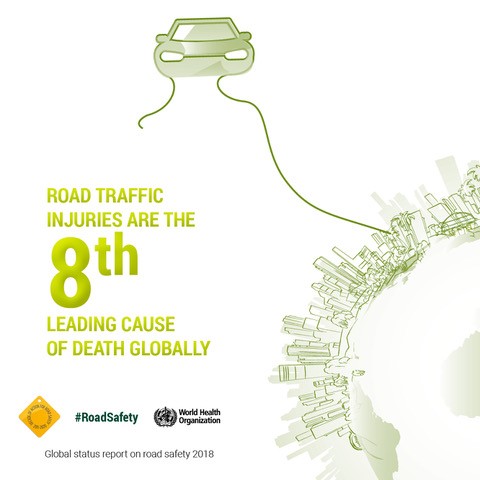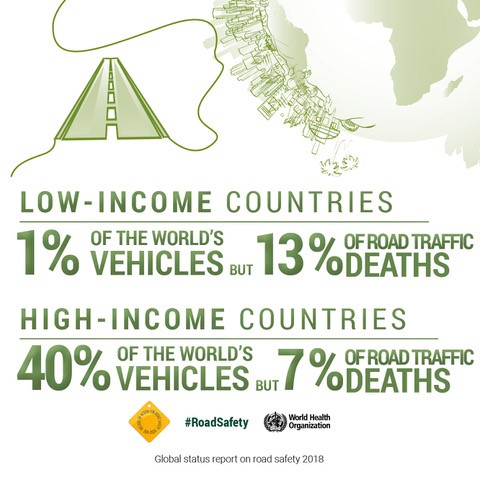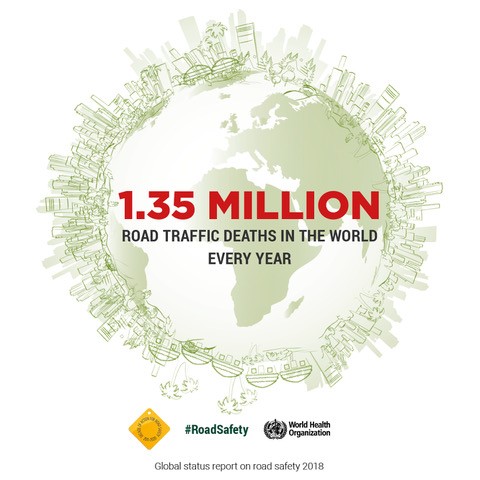New report highlights road fatalities continue to increase worldwide
Friday 7 December: The World Health Organisation (WHO) have today released a report on Global Road Safety to stimulate countries worldwide to improve road safety and serve as an advocacy tool to generate further global and local action.
Overall the key messages from the report include:
- The number of road traffic deaths on the world’s roads remains unacceptably high.
- Road traffic injuries are the leading killer of children and young adults.
- More than half of global road traffic deaths are amongst pedestrians, cyclists and motorcyclists who are still too often neglected in road traffic system design in many countries.
- An estimated 88% of pedestrian travel is on the lowest standard one and two-star roads.
- There is progress being made, however, it is far from uniform across countries.
- SDG 3.6 target to halve road death and injuries by 2020 will not be met without drastic action.
The UN Sustainable Development Goals for Road Safety (September 2015) specifically aimed to halve the number of global deaths and injuries from road traffic crashes by 2020, however, as this report highlights, road deaths are still on the rise with an estimated 1.35 million lives lost on roads globally in 2016 and up to 50 million people injured. The impact on families, communities, countries and health systems is extreme and the scale of the response does not match the scale of the problem.
“Given everything we know about the problem and its solutions, that goal is achievable if governments prioritize road safety,” said Michael Bloomberg from Bloomberg Philanthropies who made the report possible.
The WHO report also includes the Global Road Safety Voluntary Targets that have been agreed by UN Member States to help governments measure and manage road safety. Target 3 is aimed at ensuring the safety of all new roads by meeting a 3-star or better standard for all road users.
iRAP Global Product Director, James Bradford and World Bank’s Senior Transport Specialist, Jing Xiong launched the iRAP Star Rating for Designs in Washington at the recent iRAP, IDB and WRI Ross Center for Sustainable Cities Vision Zero and Innovation Workshop. “The Star Rating for Designs tool will make it easy for governments to set star rating targets for new road projects and will empower designers and road engineers to assess the road safety of a design and improve its safety star rating before the implementation of civil works,” said James.
The potential for safer roads to save lives is available in the recently launched Vaccines for Roads: Business Case for Safer Roads which provides a high-level global estimate of the lives and serious injuries that can be saved, and the social and economic benefits of maximising the percentage of travel on 3 star or better existing roads by 2030.
“iRAP, as a charity, encourages all countries to establish their own Road Assessment Programme and invest in the proven, high-return road infrastructure solutions that will save lives. We estimate that if every country on earth achieves the UN Voluntary Target for more than 75% of travel on the equivalent of 3-star or better roads for all road users then 467,000 lives could be saved every year and more than 100 million deaths and injuries saved over the life of the treatments,” iRAP CEO Rob McInerney said.
“In addition to the lives saved, importantly more than $8 of benefits would be realised for every $1 invested,” he added
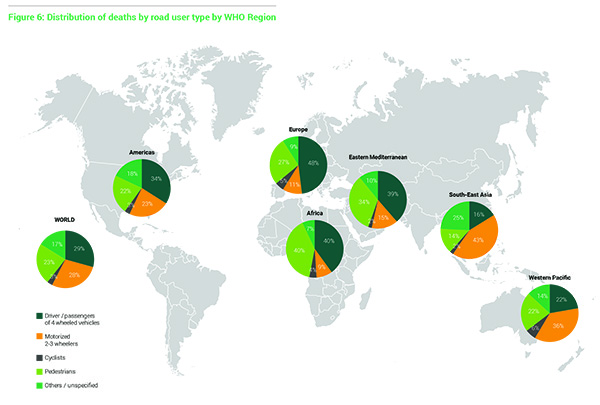
The report highlights the importance of improving the safety performance for all road user groups and captures progress in the institutional management of road safety, legislation and road user behaviour, safe roads, safe vehicles and post-crash care. Results are available at a global level and a country level to help guide priorities for action. The good news is 48 countries have reduced road deaths but sadly 104 countries saw an increase in the number of road deaths between 2013 and 2016.
iRAP will continue to work on life saving innovative tools and concepts to create a work free of high risk roads. As highlighted in the report a number of governments have now set Star Rating Policy Targets and established a dedicated Safer Roads Fund or equivalent to invest in infrastructure improvements and speed management.
We celebrate countries that have developed their own Road Assessment Programmes and are investing in safer roads, including:
- The charity AMEND that has been recognised in the WHO report with their success in raising the safety of a school in Lusaka, Zambia from 1 and 2-star to 5-star safety levels as measured by the iRAP Star Rating for Schools The work was supported by FedEx and the FIA Foundation.
- China – The Chinese Government Highway Safety to Cherish Life Programme and ChinaRAP initiative has seen over 250,000km of roads assessed and an estimated 180,000km of roads upgraded in recent years.
- The cities of Accra (Ghana) and Addis Ababa (Ethiopia) have invested in large scale construction of footpaths to improve safety for pedestrians as part of their iRAP assessments supported by Bloomberg Philanthropies via the World Bank Global Road Safety Facility.
- Toll-road operators in Chile immediately upgraded their roads to 3-star or better after they assessed their road network and are now incrementally improving roads to a 4-star or better standard.
- Australia – The Australian Government has a policy target for 90% of national roads and 80% of state roads to be 3-star or better by 2020. Investment in one major national highway project took the road from a 2 and 3-star standard to 4 and 5-star levels with more than an 80% reduction in casualty crashes and no fatalities following the upgrade (Bruce Highway, Queensland).
- Malaysia – Malaysia was the first middle-income country to set a star rating policy target with their goal to achieve 75% of travel at a 3-star or better performance level on the country’s high-volume road network by 2020.
- England – Highways England has a policy target for 90% of travel on 3-star or better roads by 2020. In addition, the UK Department for Transport has established a Safer Roads Fund that is supporting investment in local government roads that have been identified as high risk using the EuroRAP Risk Mapping
A range of case studies are available on the Vaccines for Roads – Case Studies of Success website.
The WHO Report provides the definitive snapshot of global road safety performance and provides both accountability and inspiration for action. Action that will save lives through safer roads, safer vehicles, safer road users and the road safety management and post-crash care that can reduce the tragic loss of life and unacceptable injury levels on the world’s roads.
Together we can save lives and create a world free of high-risk roads.
For more details on how to develop a Road Assessment Programme in your country and implement cost-effective star rating targets for new road designs and existing roads see our Developing a Locally Owned and Led National or State iRAP Programme Guide
For more information:
- WHO Global Status Report on Road Safety 2018 (EN)
- Visit WHO website – Global Status Report on Road Safety 2018 page
- Download the report summary (EN)
- Road Traffic Injuries: The facts infographic (EN)
- Road Traffic Injuries: The facts infographic (CH)
- Road Traffic Injuries: The facts infographic (FR)
- Progress update: Mortality infographic (EN)
- Progress update: Legislation infographic (EN)
- Access the QR Code to download the app
Media release and updates:
